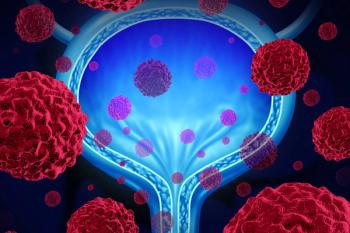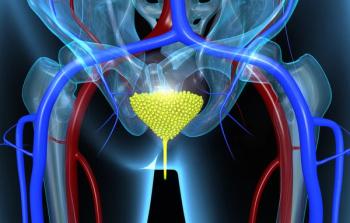
Immediate Chemotherapy After TURBT Reduces NMIBC Recurrence Risk
An immediate instillation of chemotherapy with mitomycin C following transurethral resection of a bladder tumor reduced the risk of recurrence of non–muscle-invasive bladder cancer (NMIBC).
An immediate instillation of chemotherapy with mitomycin C (MMC) following transurethral resection of a bladder tumor (TURBT) reduced the risk of recurrence of non–muscle-invasive bladder cancer (NMIBC), according to a large prospective study.
“Despite the therapeutic impact of TURBT, recurrence rates are high with recurrences in up to 82%,” wrote study authors led by Judith Bosschieter, MD, of VU University Medical Center in Amsterdam. “An immediate single chemotherapeutical instillation within 24 hours after surgery might prevent recurrence,” by eradicating floating tumor cells as well as due to an ablative effect on residual tumor cells at the tumor site and on small overlooked tumors.
The new study included 2,243 patients. Patients had NMIBC and were randomized to undergo either immediate (within 24 hours) or delayed (2 weeks after TURBT) instillation of MMC. Patients were further categorized as low-risk, intermediate-risk, or high-risk, and these groups eventually received 1, 9, and 15 instillations, respectively. Results of the study were
After 3 years of follow-up, the recurrence risk was 27% in the immediate group and 36% in the delayed group (P < .001). After the study’s full follow-up period, the multivariate hazard ratio for recurrence favored immediate instillation, at 0.73 (95% CI, 0.63–0.85; P < .001). Along with immediate instillation of MMC, other variables that significantly predicted recurrence included previous recurrences, number of tumors, tumor grade, and number of adjuvant instillations.
In the low-risk patients, the 5-year recurrence risk was 43% with immediate instillation and 46% with delayed instillation (P = .11). For intermediate-risk patients at 3 years, the recurrence risks were 20% with immediate and 32% with delayed treatment (P = .037). And for high-risk patients also at 3 years, these risks were 28% and 35%, respectively (P = .007).
In the immediate group, 258 patients reported an adverse event (AE), compared with 22% in the delayed group (P = .08). The most common AEs included exanthema and irritative urinary symptoms.
“To our knowledge, this is the largest trial studying the efficacy of an immediate compared with a delayed instillation, in patients treated with and without additional instillations,” the authors wrote. They noted a major limitation of the subgroup analysis: the risk categories in the study do not correspond with published risk guidelines by the European Organisation for Research and Treatment of Cancer or the European Association of Urology. Because of this, specific recommendations for subgroups cannot be made based on these results.
Still, they concluded that overall, an immediate instillation within 24 hours of TURBT does reduce recurrence risk compared with delayed instillation in NMIBC. This echoes
Newsletter
Stay up to date on recent advances in the multidisciplinary approach to cancer.


















































































